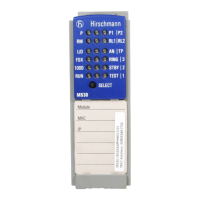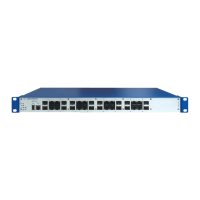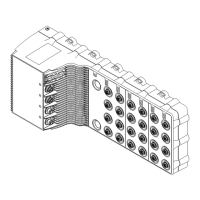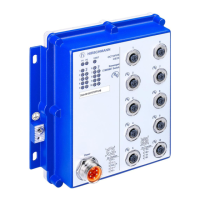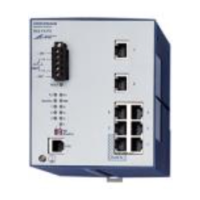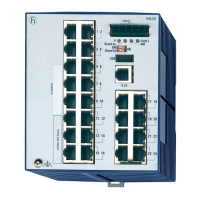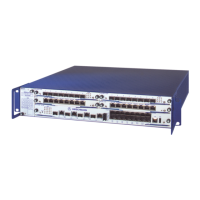Basic Settings
RM Web L3P
Release
4.1
03/08
2.5
Power over ETHERNET
29
2.5 Power over ETHERNET
If the device is equipped with PoE media modules, you will then have the
option of supplying current to devices such as IP phones via the twisted-pair
cable. PoE media modules support Power over ETHERNET according to
IEEE 802.3af.
On delivery, the Power over ETHERNET function is activated globally and on
all ports.
System power for MS20/30 and Power MICE:
The device provides the nominal system power for the sum of all PoE ports
plus a surplus. Because the PoE media module gets its operating voltage
externally, the device does not know the possible system power. The device
therefore assumes for now a "nominal system power" of 60 Watt per PoE
media module.
Nominal power for MACH 4000:
The device provides the nominal power for the sum of all PoE ports plus a
surplus. Should the connected devices require more PoE power than is
provided, the device then switches PoE off at the ports. Initially, the device
switches PoE off at the ports with the lowest PoE priority. If multiple ports
have the same priority, the device first switches PoE off at the ports with the
higher port number.
With “Function on/off” you turn the PoE on or off.
With “Send Trap” you can get the device to send a trap in the following
cases:
– If a value exceeds/falls below the performance threshold.
– If the PoE supply voltage is switched on/off at at least one port.
Enter the power threshold in “Threshold”. When this value is exceeded/
not achieved, the device will send a trap, provided that “Send trap” is en-
abled. For the power threshold you enter the power yielded as a percent-
age of the nominal power.
“Nominal Power” displays the power that the device nominally provides
for all PoE ports together.
“Reserved Power” displays the maximum power that the device provides
to all the connected PoE devices together on the basis of their classi-
fication.
“Delivered Power” shows how large the current power requirement is at
all PoE ports.

